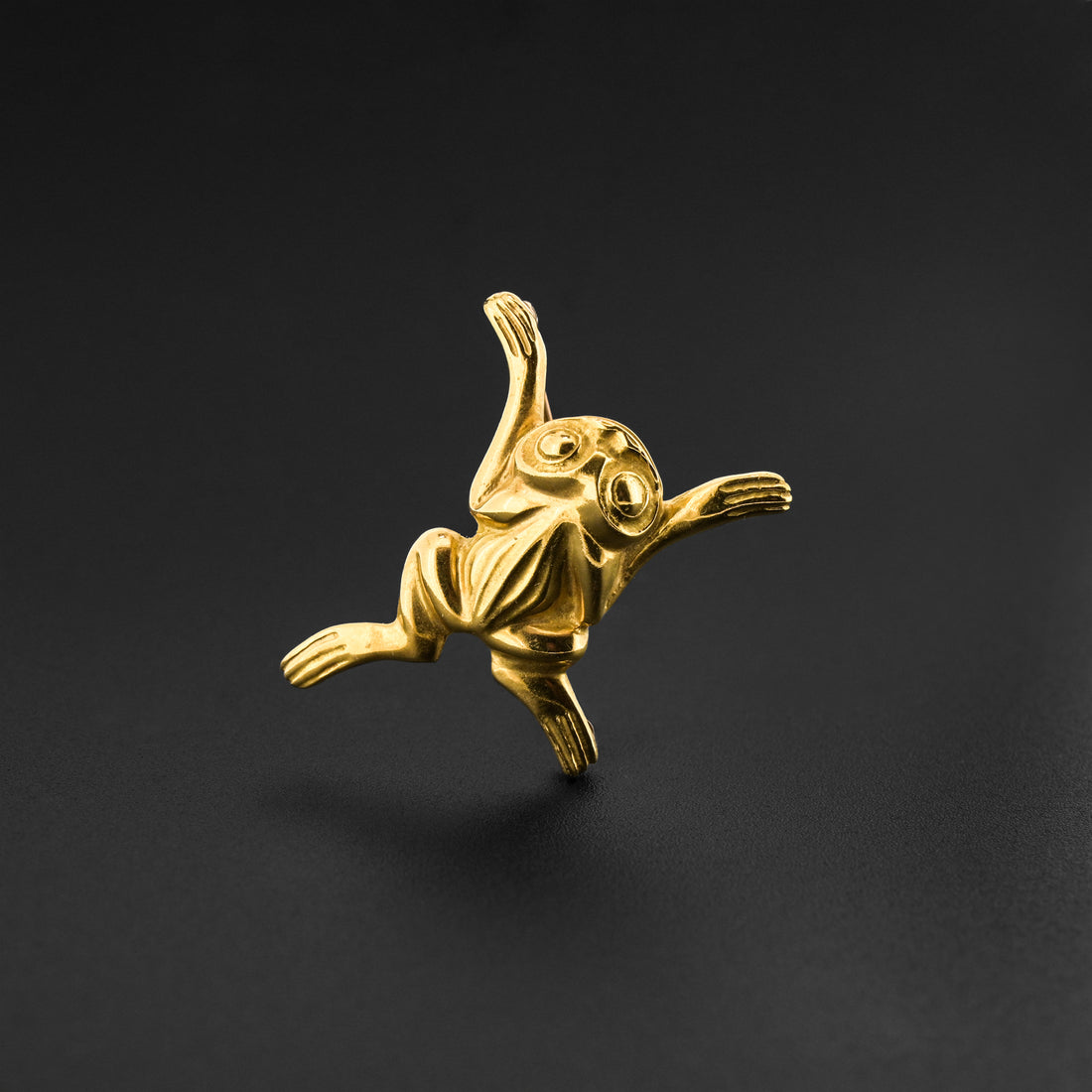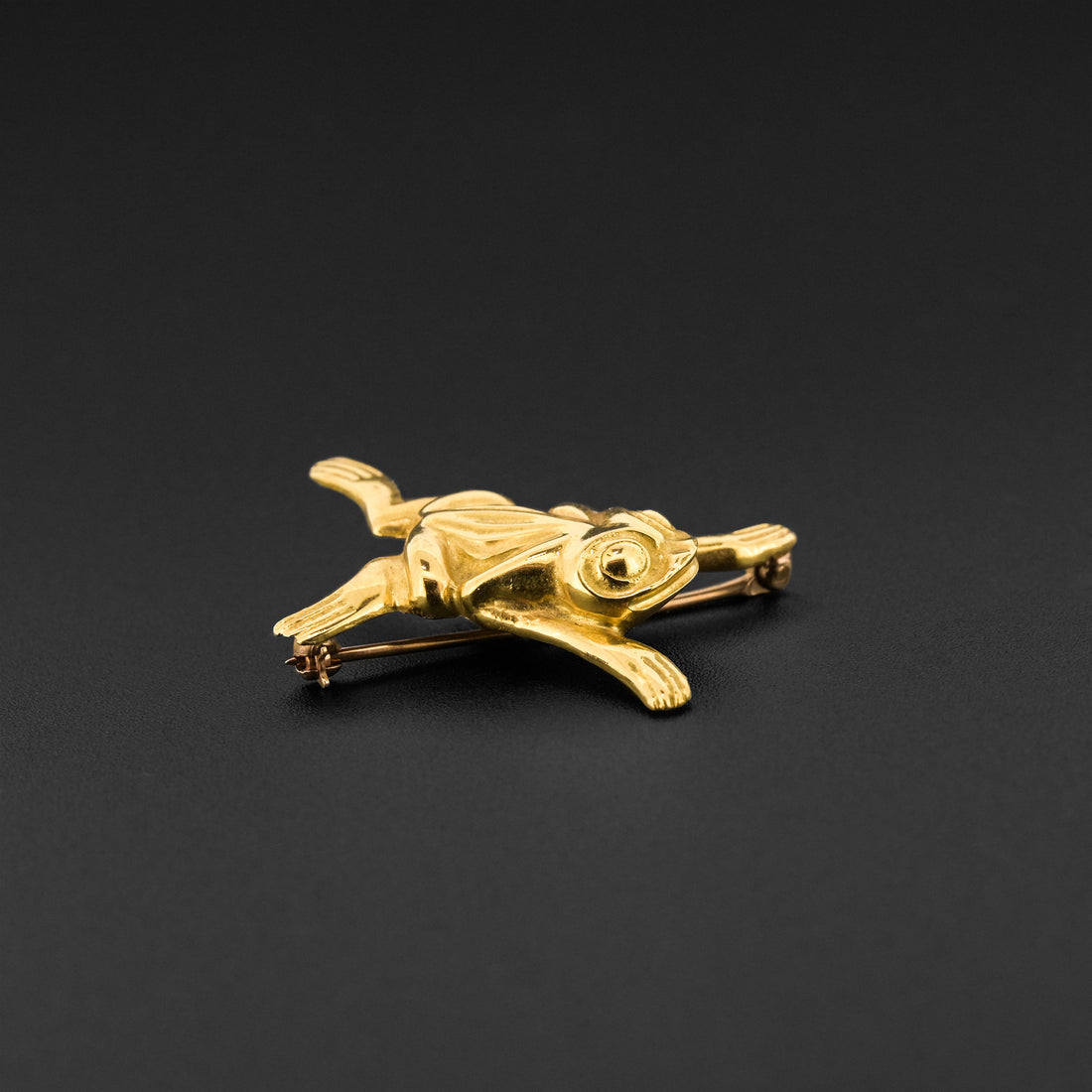Frog - Limited Edition 18k Gold Brooch


Frog - Limited Edition 18k Gold Brooch
Bill Reid
1 3/8" x 1 1/8"
We have an 18k brooch from this limited edition released in 1971, numbered 78/100. These brooches often display two stamps on the underside of the frog's feet, a 14k stamp and an 18k stamp. The pins that Bill used were 14k while the brooch itself is solid 18k.
The Bill Reid original 22k gold frog pin was executed in 1971, using the repoussé technique. The original is now on permanent display at the University of British Columbia's Museum of Anthropology in Vancouver, BC.
You can use product metafields to assign content to this tab that is unique to an individual product. Use tabs to highlight unique features, sizing information, or other sales information.
Bill Reid
CULTURAL GROUP:
Haida
BORN:
January 13, 1920 (d. 1998)
BIRTHPLACE:
Victoria, BC
William Ronald Reid, or Bill Reid, was a world renowned sculptor, and is now regarded as one of Canada’s finest artists. Bill was also a descendant of the great Haida carver and silversmith, Charles Edenshaw. He did not elect to study art in high school, but he did recall a young substitute teacher, Jack Shadbolt, who read poetry and introduced Kandinsky-style drawing to his class of 8th graders. Bill's adult career surprisingly began in broadcasting as a radio announcer. His clear, deep, and resonant voice took him to a variety of stations, including ten years with CBC in Toronto, ON, and Vancouver, BC. While Bill was working on Toronto, two events proved to be formative to his career as an artist: he studied jewellery making at the Ryerson Institute of Technology, and he became acquainted with the collection of Northwest Coast Native art in the Royal Ontario Museum. Of particular interest to him was a great pole from his mother’s ancestral village, Tanu. It was during this time that Bill began to explore his cultural heritage, and the art of the Haida people. Before he left CBC in 1958, Bill wrote and narrated a television documentary that explored salvaging the last totem poles of the Queen Charlottes. He also narrated a film documenting the People of the Potlatch exhibition at the Vancouver Art Gallery. When Bill Reid returned to the West Coast, he began to seriously pursue Native imagery in both jewellery and sculpture. Soon after his arrival, he was engaged in a four-year task to recreate a section of a Haida Village for the University of British Columbia in Vancouver, BC. This task was the turning point for Bill Reid’s incredible artistic career that saw him produce remarkably intricate jewellery, large sculptures, drawings, and silkscreen prints. Bill created numerous masterpieces, including The Skidegate Pole in 1978, the yellow cedar sculpture Raven and the First Men for the Museum of Anthropology in Vancouver, BC, in 1980, the bronze sculpture Lord of the Under Sea for the Vancouver Aquarium in 1984, the cedar canoe Lootas for Expo ’86, and the bronze sculpture Spirit of Haida Gwaii for the Canadian Embassy in Washington, DC, in 1990. There is also a bronze cast of the Spirit of Haida Gwaii at the International Departures Terminal at Vancouver International Airport. In addition, this sculpture was featured on Canada's twenty dollar bill. In 1994, he received the prestigious Order of Canada from the Canadian Government. Bill Reid passed away in 1998.


